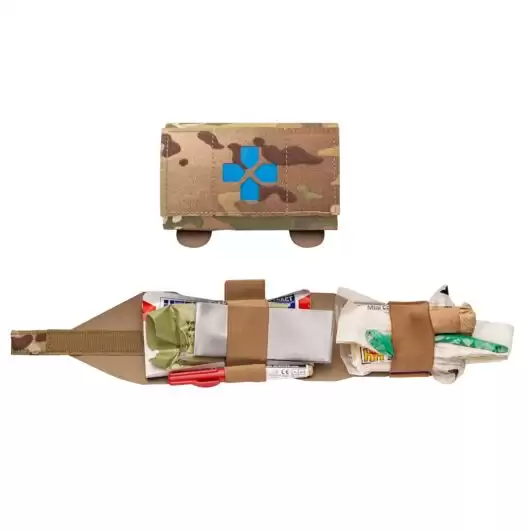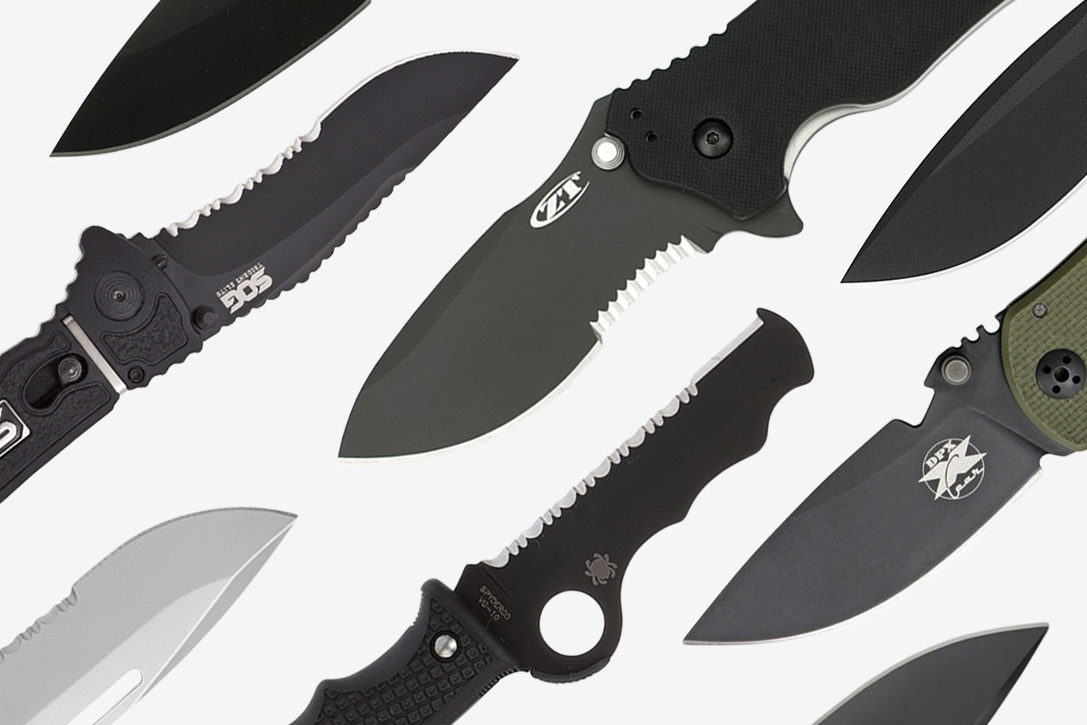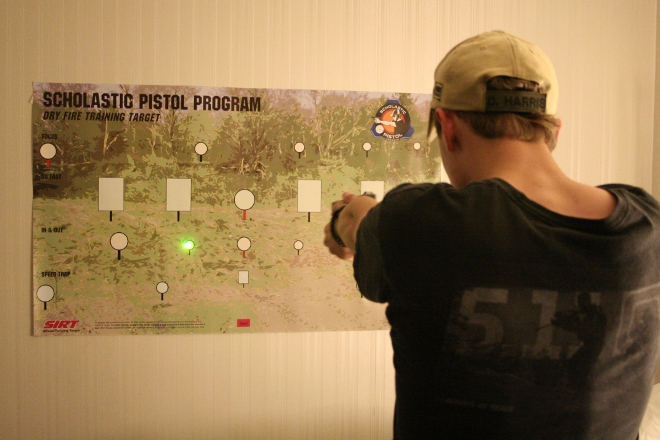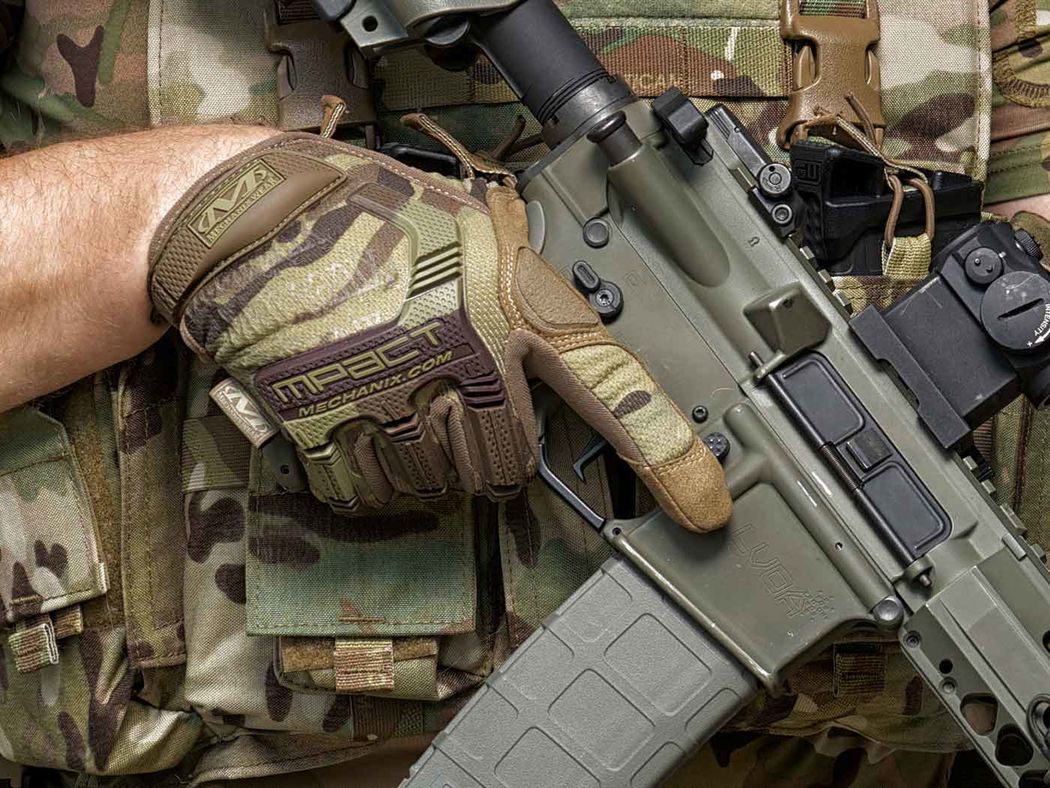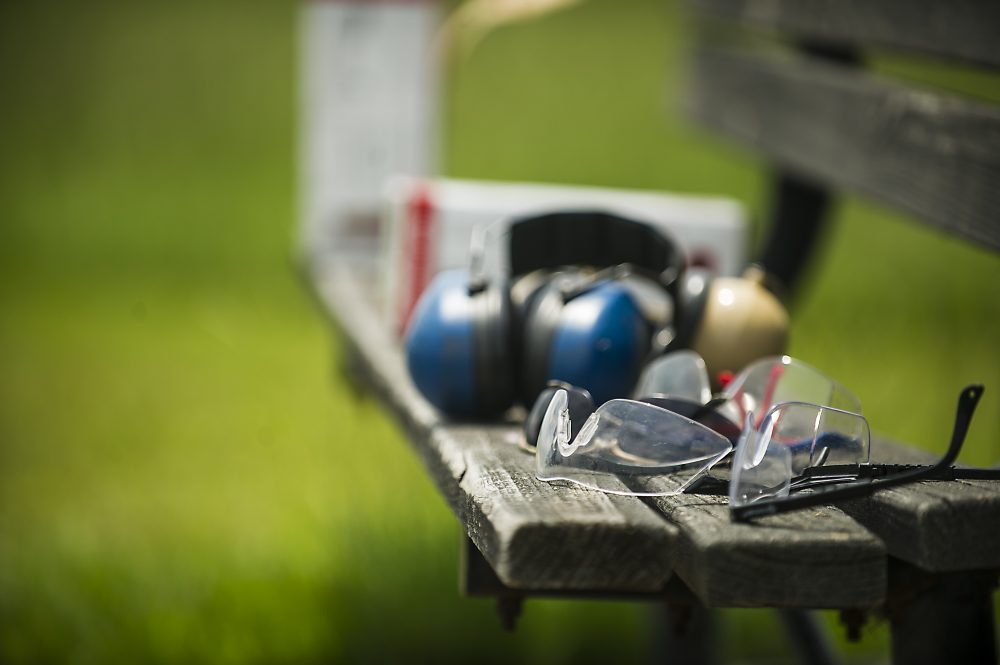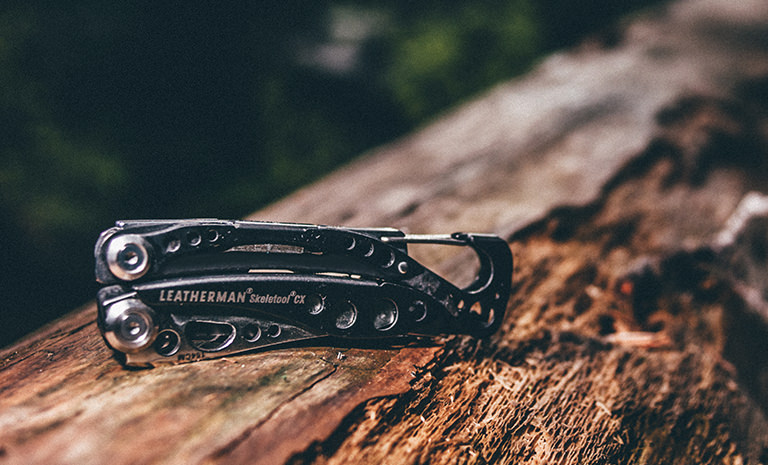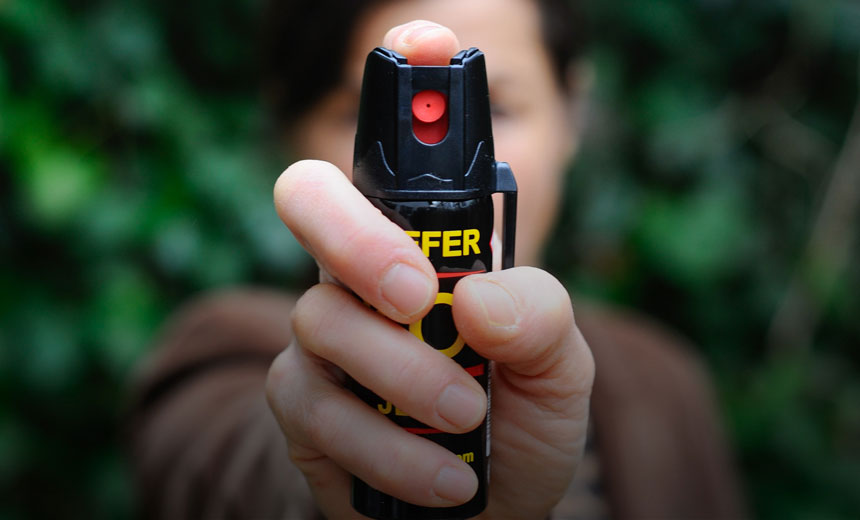When the worst happens, are you ready?
Whether it’s a negligent discharge, a fall, a car accident, or a slip of your knife, you may find yourself facing a medical emergency.
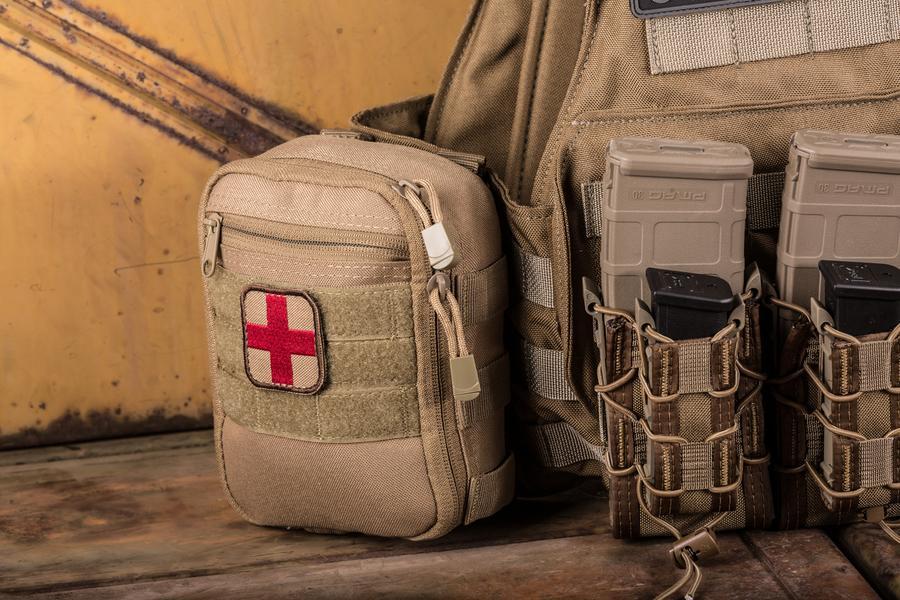
While medical care may be minutes away, some of the leading fatal injuries can turn deadly in that time.
That’s why it’s critical to maintain and carry an IFAK.
We’re going to talk about some great kits and IFAK pouches, but first, let’s take a closer look at what an IFAK is and why you need one.
What’s an IFAK?
IFAK stands for “individual first-aid kit,” but don’t expect to only find a few bandaids and some antibiotic ointment in one of these. IFAKs are designed for trauma, and they pack some heavy-duty medical supplies in a small package.
These kits were developed for military use so that every person had their own life-saving medical equipment, not just the medic or corpsman.
When seconds count, IFAKs provide the tools needed to stabilize a person until help can get there.
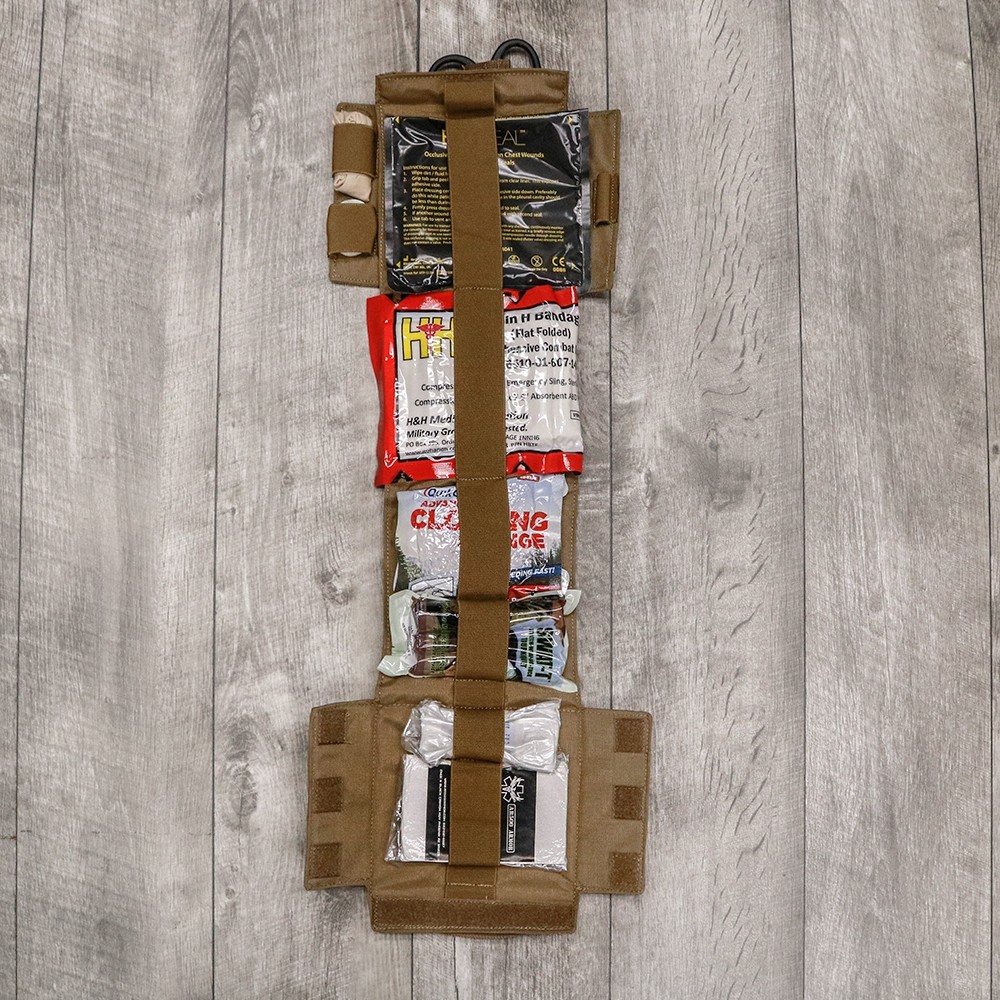
Nowadays, IFAKs have made it out into the rest of the civilian world, and we’re a pretty big fan of the concept.
These little kits are great to carry in your car, your range bag, your daypack, or even as a part of your EDC (yes, they come that small).
After all, you never can tell when tragedy will strike.
Why Choose an IFAK over a First-Aid Kit?
If you decided to take a quick spin through the Google results, you might have noticed that IFAKs are a bit pricier than your average drugstore first-aid kit.
“So, why do I need to spend so much?”
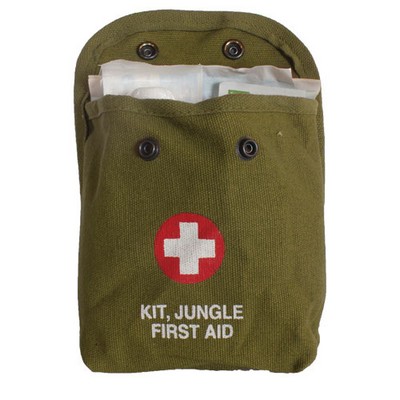
This one is from Vietnam.
As mentioned above, IFAKs are intended to treat traumatic wounds. We’re talking arterial bleeds, sucking chest wounds, airway obstructions, and the like.
Your little red first-aid kit is great for taking care of cuts and scrapes (and heck, you should even have some of those supplies in your IFAK), but it is nowhere near ready to stop the bleeding from a gunshot wound to the inner thigh.
IFAKs are purpose-built to handle wounds that quickly turn deadly so that help can get there. They’re not meant to fix the problem — just slow it down until the pros can get there and take over.
Why Prepare for Traumatic Injuries?
When really bad things happen, being prepared can be the difference between life and death.
IFAKs are made to address the most common, most dangerous traumatic injuries, which are the leading causes of trauma fatalities. These include:
- Compressible hemorrhage
- Tension pneumothorax
- Airway obstruction and ventilatory compromise
The military has been studying battlefield deaths, looking for ways to improve survival rates of traumatic injuries.
Between 2005 and 2013, the percentage of wounded soldiers in Afghanistan who died of their injuries was cut in half — largely thanks to the introduction of measures like the IFAK.
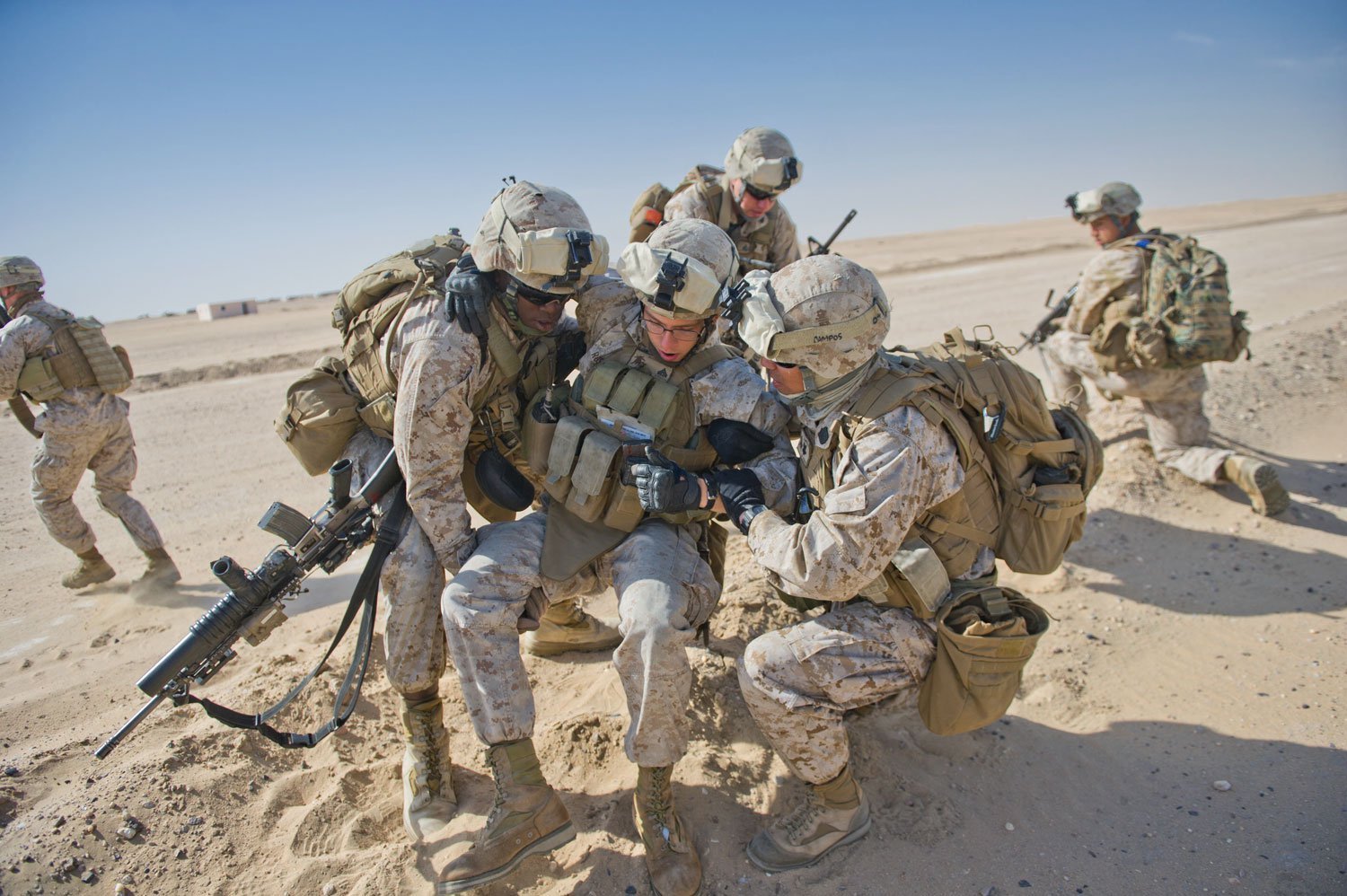
Let’s take a closer look at how an IFAK prepares you to address common traumatic injuries, and what you should keep in your kit to be prepared.
Hemorrhaging
Also known as plain ol’ bleeding, hemorrhaging is one of the riskiest consequences of a traumatic injury, like a gunshot wound.
In fact, it was pretty much the most common cause of battlefield deaths up ‘til the introduction of the IFAK. After all, you pretty much want to keep as much of your blood inside you as possible.
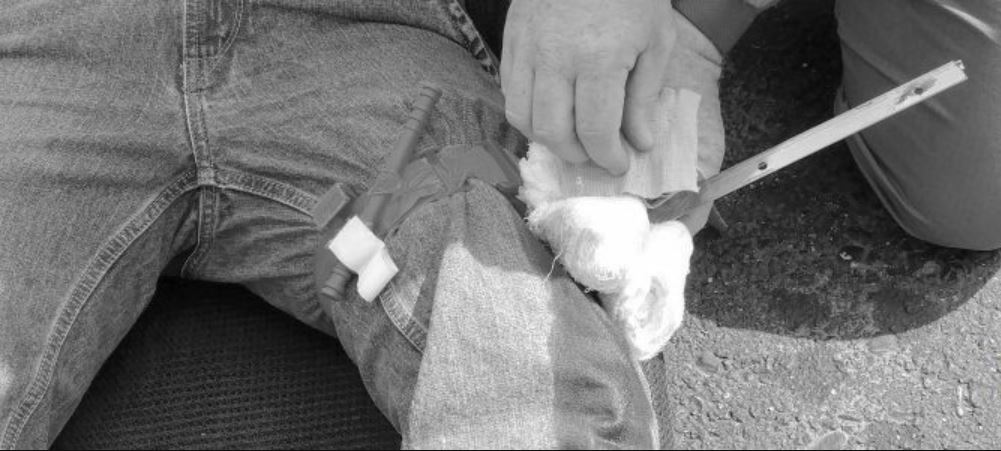
of hemorrhage treatments.
There are a number of products that can be used to stop blood loss rapidly, which is important considering that it’s possible to bleed out in just a few minutes, depending on the location of the injury.
Your job is to use your IFAK to slow or stop the bleeding and buy time for EMS to get there and provide better care.
Here are some of the tools you should have on hand to help.
Hemostatic Agents
This stuff is known pretty universally as “QuikClot,” but it’s just a brand name for a type of product. It used to be that hemostatic agents were a cauterizing powder you’d pour on a wound to stop the bleeding.
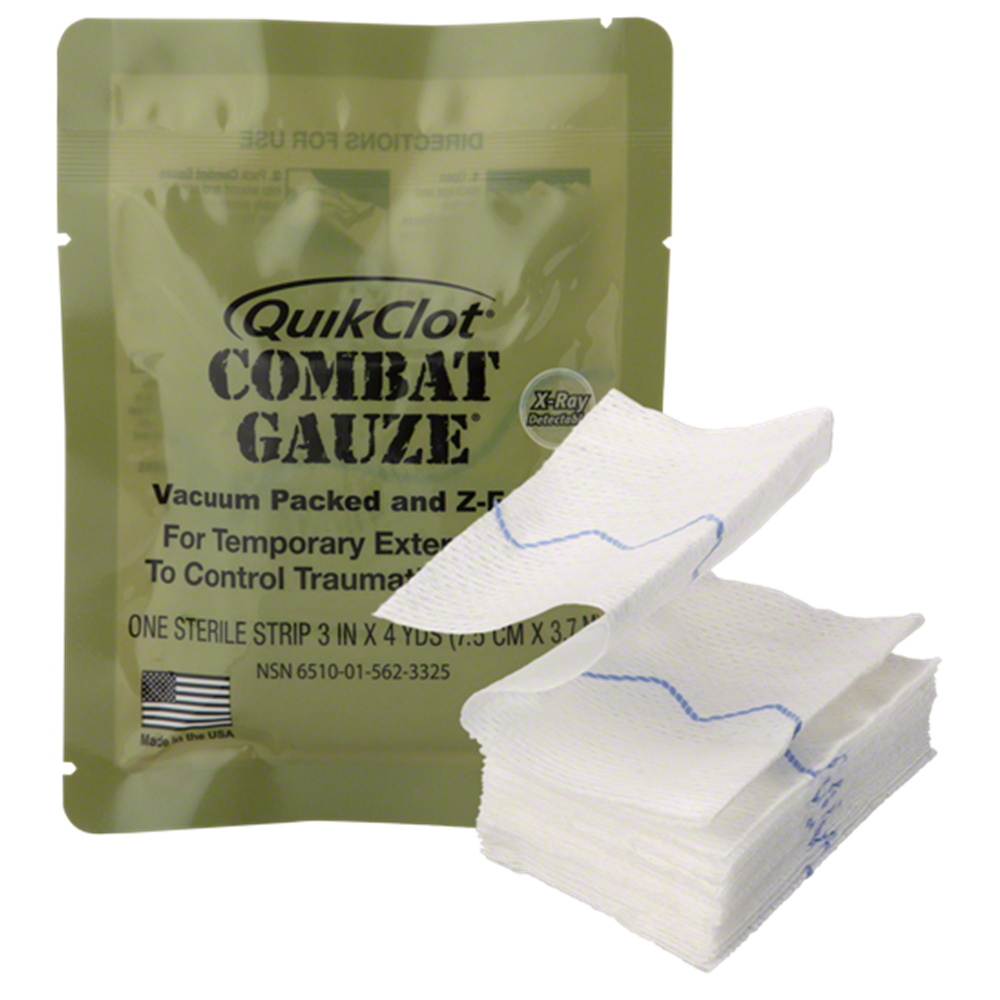
Not only is this super painful, obviously, but it’s a bit of a problem to clean out of the wound when it’s time for higher medical services to fix things.
Nowadays, you’re more likely to find QuikClot gauze (or similar), which is a sterile gauze dressing impregnated with kaolin, which is an inorganic mineral that improves blood’s ability to clot.
This was developed for the military, originally, but is pretty easy to find for civilian use now.
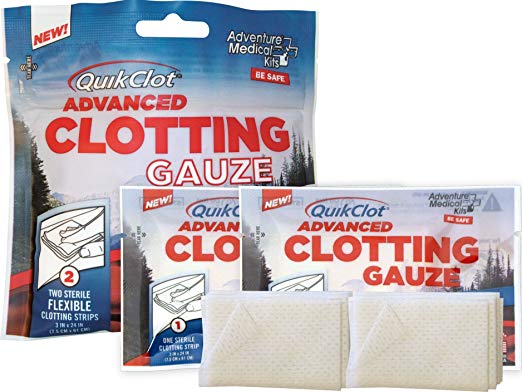
QuikClot Gauze
Pros
- Easy to use and deploy
- Non-cauterizing
- Naturally encourages clotting
Cons
- Small size is difficult to use on larger wounds
You can fill a wound with the gauze or press it against the outside, so it’s a good solution for bleeding just about anywhere on the body.
It’s a pretty inexpensive, convenient thing to keep around, especially since it can be used by anyone with minimal training.
Tourniquets
There’s a lot of myths out there about the safety of tourniquets. Basically, it boils down to this: Using a tourniquet is safer than bleeding out.
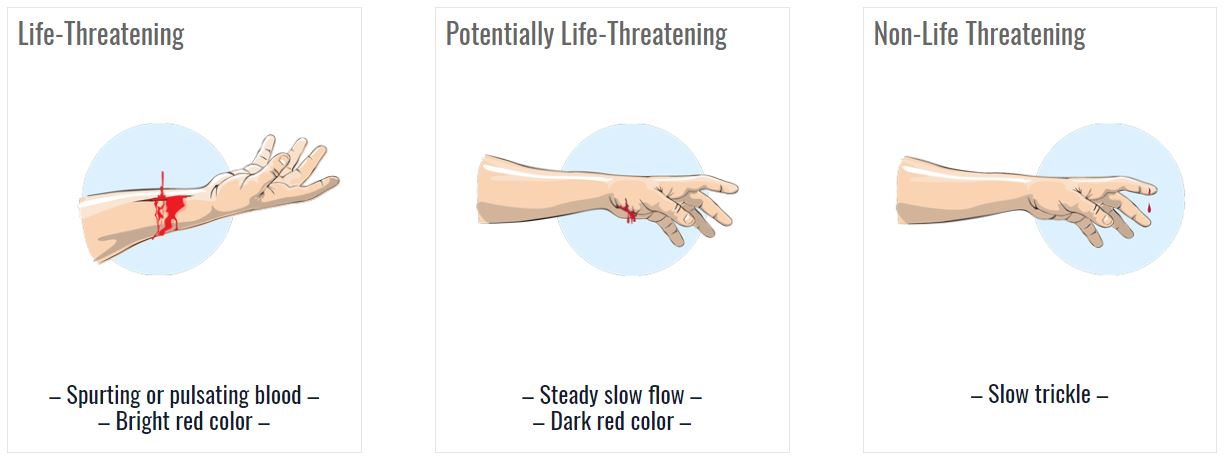
Really, a tourniquet shouldn’t be left on for a long time, since it can cause nerve damage. But, when EMS is on the way, a tourniquet won’t be on for nearly long enough to cause harm — just to save lives.
You can also help ensure that tourniquets are removed in a timely fashion by higher medical care by labeling the application time on the tourniquet itself or on the patient directly.
That said, there are a few options out there to choose from.
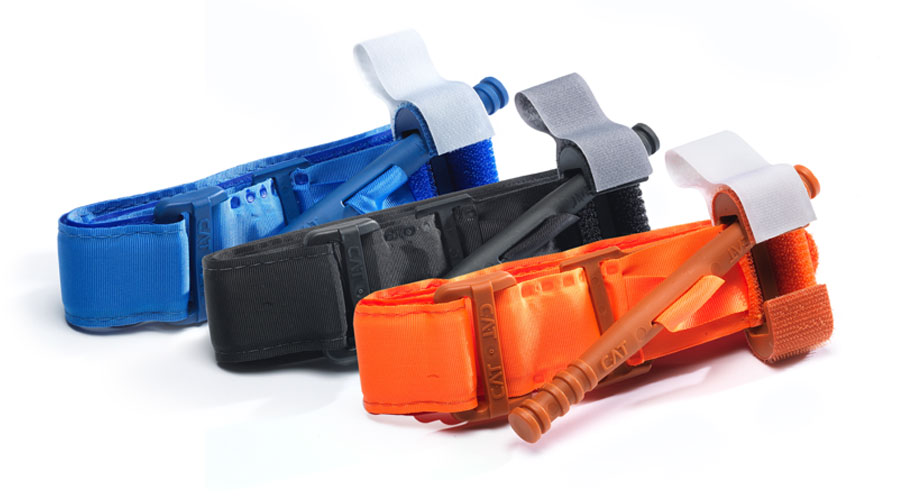
The modern tactical tourniquet is credited with saving more lives on the battlefield than just about any other medical tool. They’re frequently carried as a part of an IFAK, as well as just about anywhere they can easily be reached on a soldier’s gear.
The three main types of tourniquets in use by the military: CAT, SOFTT, and RATS.
Combat Application Tourniquets (CAT) are, by far, the most popular type of tourniquet in use. They’re easy to apply rapidly. Ones made by reputable brands feature some seriously heavy-duty construction and features to make them just about foolproof.
North American Rescue is a company we trust, but beware of knock-offs — the cheap CATs you can find are great for practice, but not good quality. Don’t risk lives to save a few bucks.
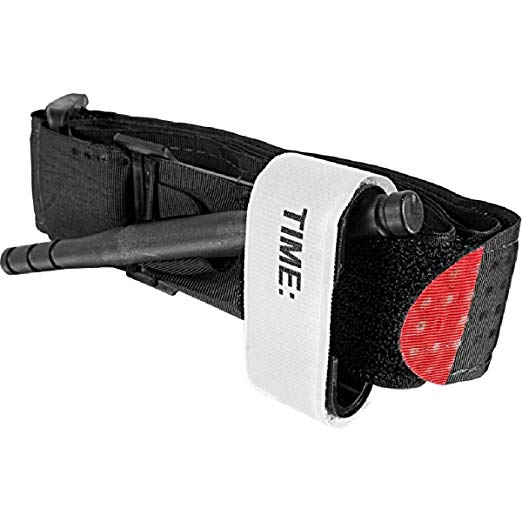
North American Rescue CAT
Pros
- High-quality, combat-tested design
- Easy to apply quickly
- Label for noting time
Cons
- Attracts a lot of copycats--be sure you get the real deal
The next type is the SOFTT (which stands for SOF® Tactical Tourniquet), and it works pretty similarly to the CAT. It’s got a few small differences, such as a safety set screw to secure the windlass, a textured metal windlass, and dual locking rings — but largely, it’s very similar.
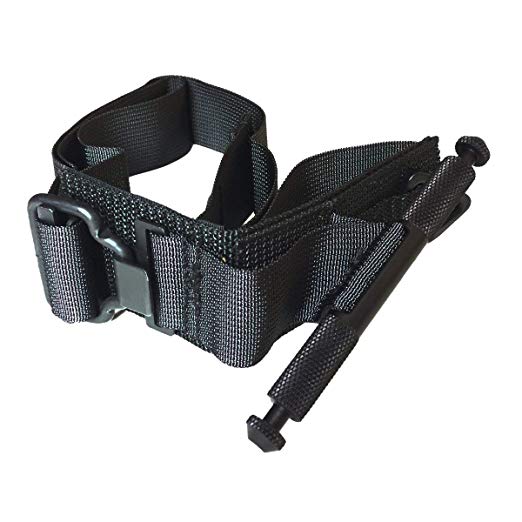
SOF® Tactical Tourniquet
Pros
- Safety set screw prevents TQ from loosening during transport
- Easy to apply
- Snap-lock buckle makes it easier to get around limbs without rethreading
Cons
- Hard to tighten down on smaller people
The final type of TQ we want to cover is the RATS tourniquet, or Rapid Application Tourniquet System. This one can be a little controversial — people either love it or hate it.
RATS was developed by a career Green Beret medic, based on what they’d found worked best for rapid deployment under pressure.
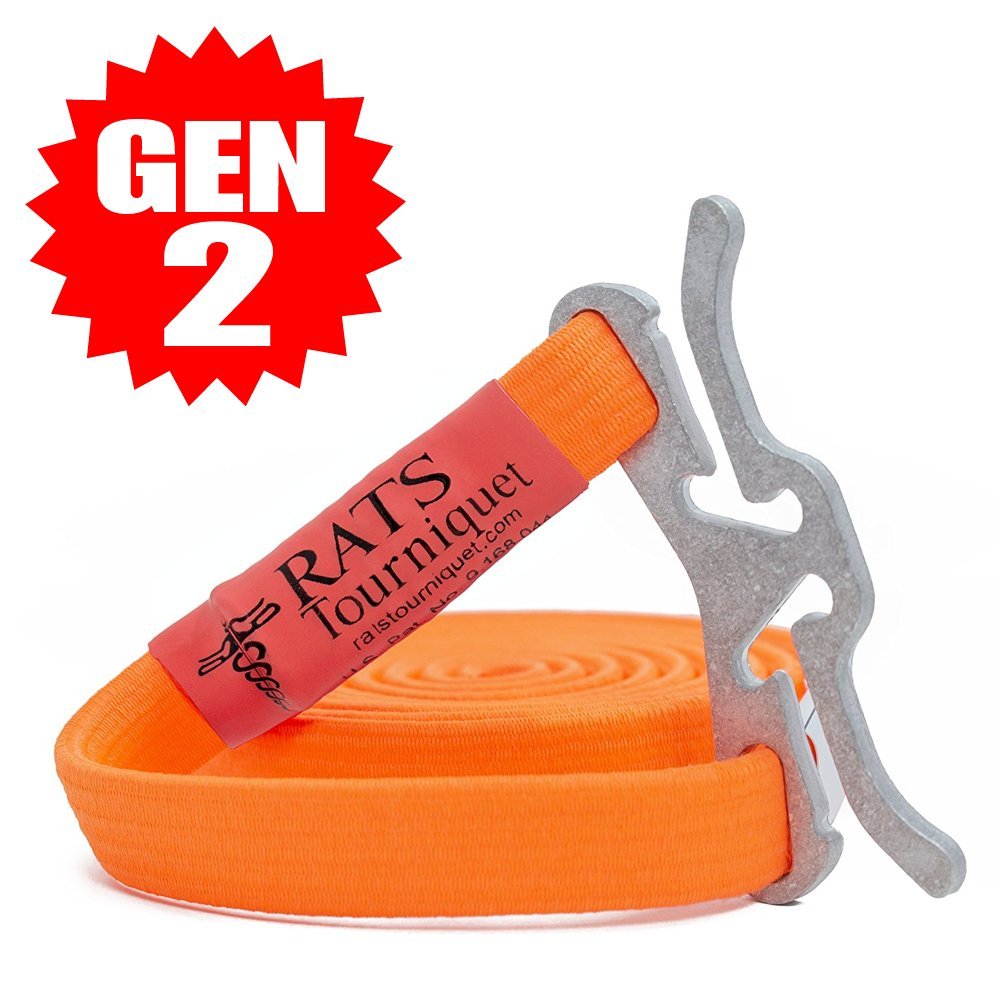
RATS Gen 2 Tourniquet
Pros
- One-handed application
- Works on small limbs and pets
- Designed to deploy rapidly
Cons
- Takes practice to learn
That said — these do take more practice than either the CAT or the SOFTT. They can be used on much bigger or smaller limbs than the other options, so they’re a good general TQ, if you know how to tighten it down and apply it correctly.
It’s much smaller than other TQs, so it’s a great addition to your EDC or as a backup. It can even be used on pets.
Trauma Wound Dressing
Now that you’ve applied a tourniquet and/or hemostatic gauze, you need to dress the wound. Trauma wound dressings, also known widely as Israeli bandages, are revolutionary when it comes to controlling bleeding.
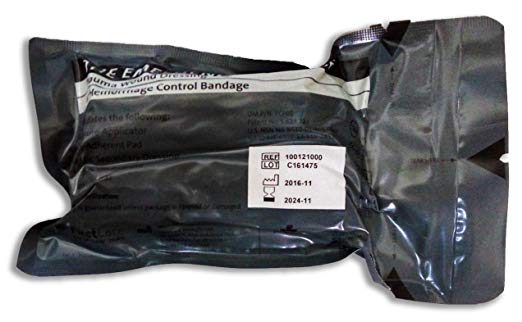
Israeli Bandage
Pros
- Applies 30 lbs of pressure
- One handed application
- Double sterile wrapping
Cons
- Extra layer of wrapping can slow you down
Basically, these pressure dressings are sterile bandages that can be applied over hemostatic dressings to apply pressure to the wound and free you up to keep working. They apply 30 pounds of pressure and use a closure bar to make it easy to lock the bandage into place securely.
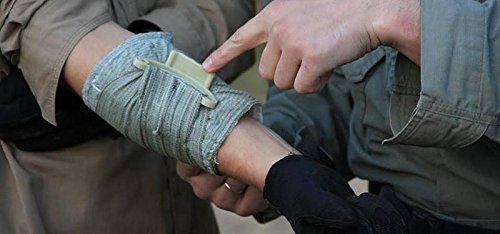
They’re super easy to apply and can be done with one hand, if necessary, so they’re great for self-application.
Sucking Chest Wounds
After hemorrhaging, sucking chest wounds are the next most common preventable fatal wound. While you can’t fix these long-term without some higher medical care, you can control the damage and prevent collapsed lungs.
Your respiratory system relies on suction and compression to move air in and out of your lungs. Your chest cavity is pressurized, but when you get a hole in it, you can develop tension pneumothorax — air in the chest cavity putting pressure on the outside of the lung and interfering with breathing.
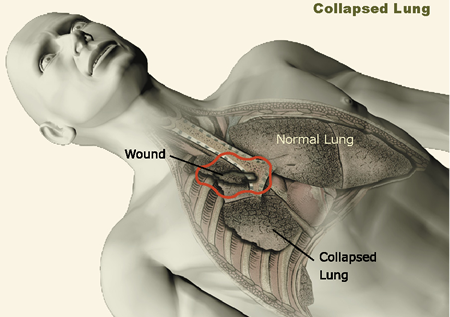
To treat a sucking chest wound, you need to stop air from getting into the chest cavity by means other than your trachea, so you need to seal the wound.
While battlefield medicine may rely on anything it can to seal the wound, like bandaging packaging and duct tape, there are purpose-made chest seals, which adhere to the skin and prevent air from leaking in.
We recommend Halo chest seals, but there are others out there. You can find a variety of sizes out there, so you can stock up on ones that fit your particular kit.
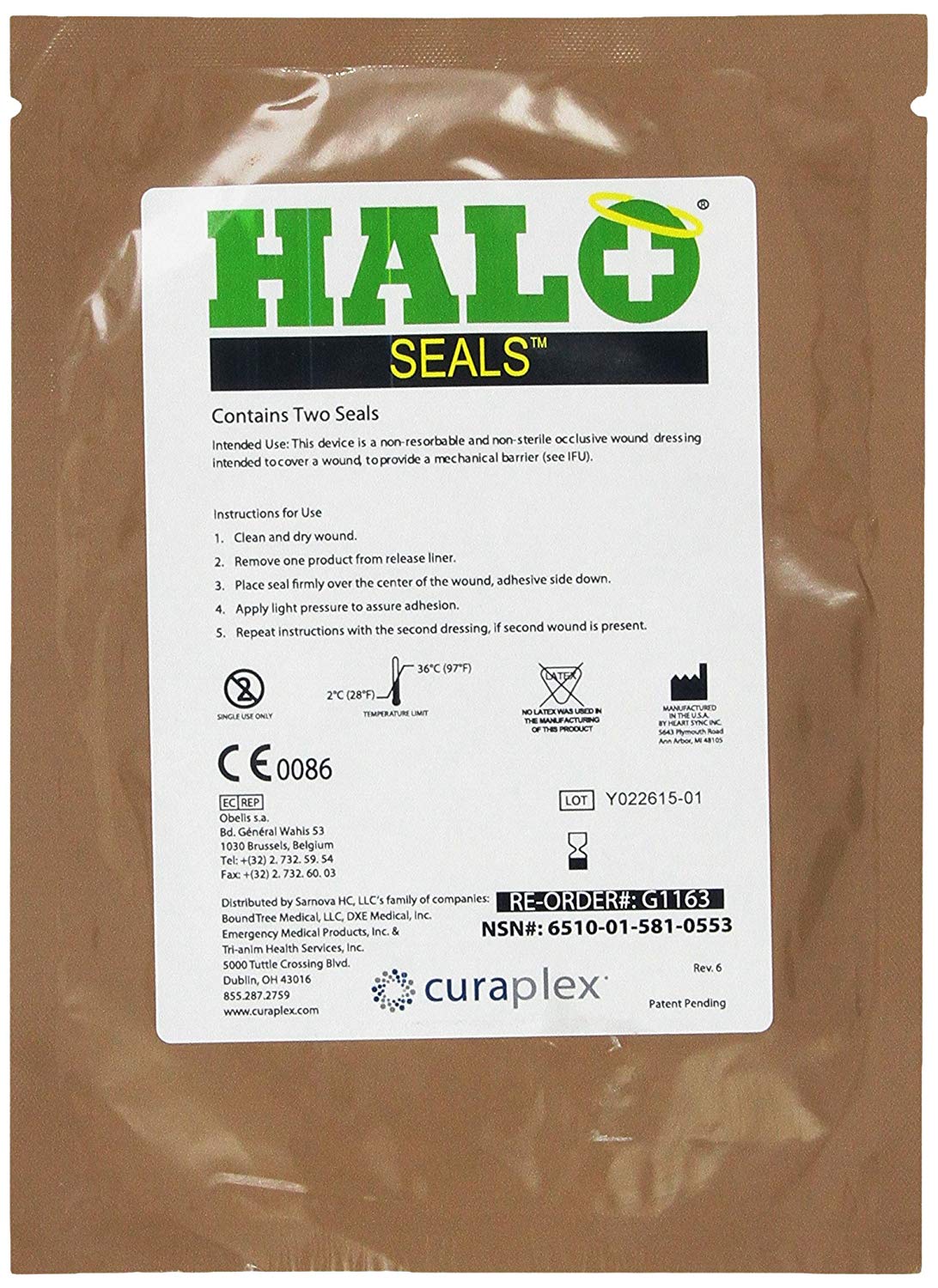
Halo Chest Seals
Pros
- Sticks in any condition
- 2 seals
- Easy to apply
Cons
- Both seals are packaged together.
Chest seals should stick to your body regardless of conditions — rain, snow, blistering heat, sweat, blood, dirt, and body hair are no match for these things. Getting them off, however, is another story…especially if you’re particularly hairy.
Hey, at least you’re not dead!
Burns
Okay, so burns aren’t typically fatal, but they are common and they do hurt like H-E-Double-Toothpick. Burns can also leave you with serious nerve damage, scarring, and make you vulnerable to infection.
If you’ve ever touched a hot gun barrel after stringing rounds, burnt yourself on your car’s exhaust pipe, or grabbed a cast-iron skillet handle during cooking, you know just how easily and quickly bad burns can happen.
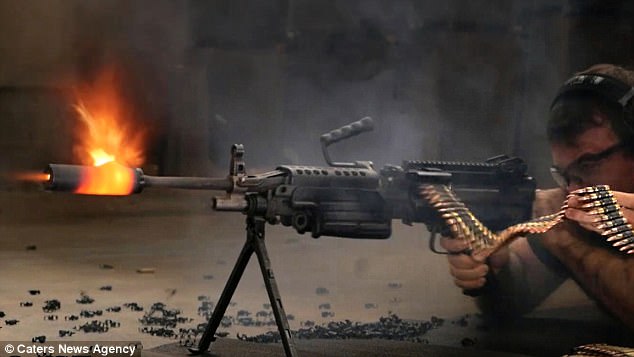
While big burns might take more than you can easily carry in an IFAK, small burns can be treated pretty simply with a burn gel.
Pain relief is one of the most important parts of treating a burn, in addition to preserving the skin. Water-Jel burn dressings are sterile, non-adhesive, burn gel-soaked pads that can be applied to the skin.
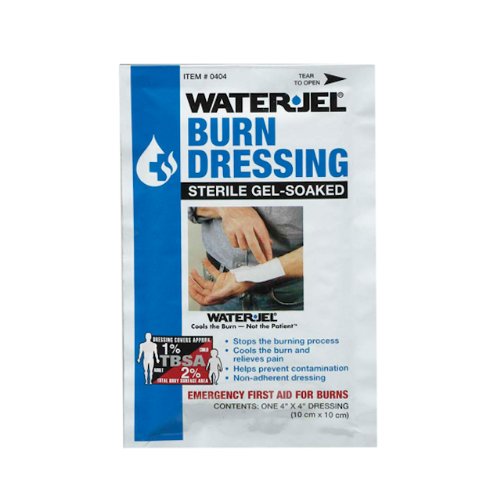
Water-Jel Burn Dressing
Pros
- Stops burning immediately
- Protects the skin
- Sterile
Cons
- Bulky for small IFAKs
These dressings immediately stop the burning process, soothe the pain, and protect from contamination. Acting quickly to treat burns can significantly reduce the effects of the injury, so you want to make sure you’re ready for them.
Infections
Preventing infection is a little easier said than done out in the field, but you can reduce the risks with a few things that’ll fit into your IFAK just fine.
Washing up is obviously the best way to avoid spreading germs or viruses, but in an emergency, you just may not have the option. Don’t forget that the person providing care is also at risk of exposure since bodily fluids can carry infections.
Nitrile Gloves
Keep a few sets of sterilized nitrile gloves individually bagged in ziploc baggies. They’re super cheap, super small, and make a super big difference in protection. Toss at least a few pairs in your IFAK.
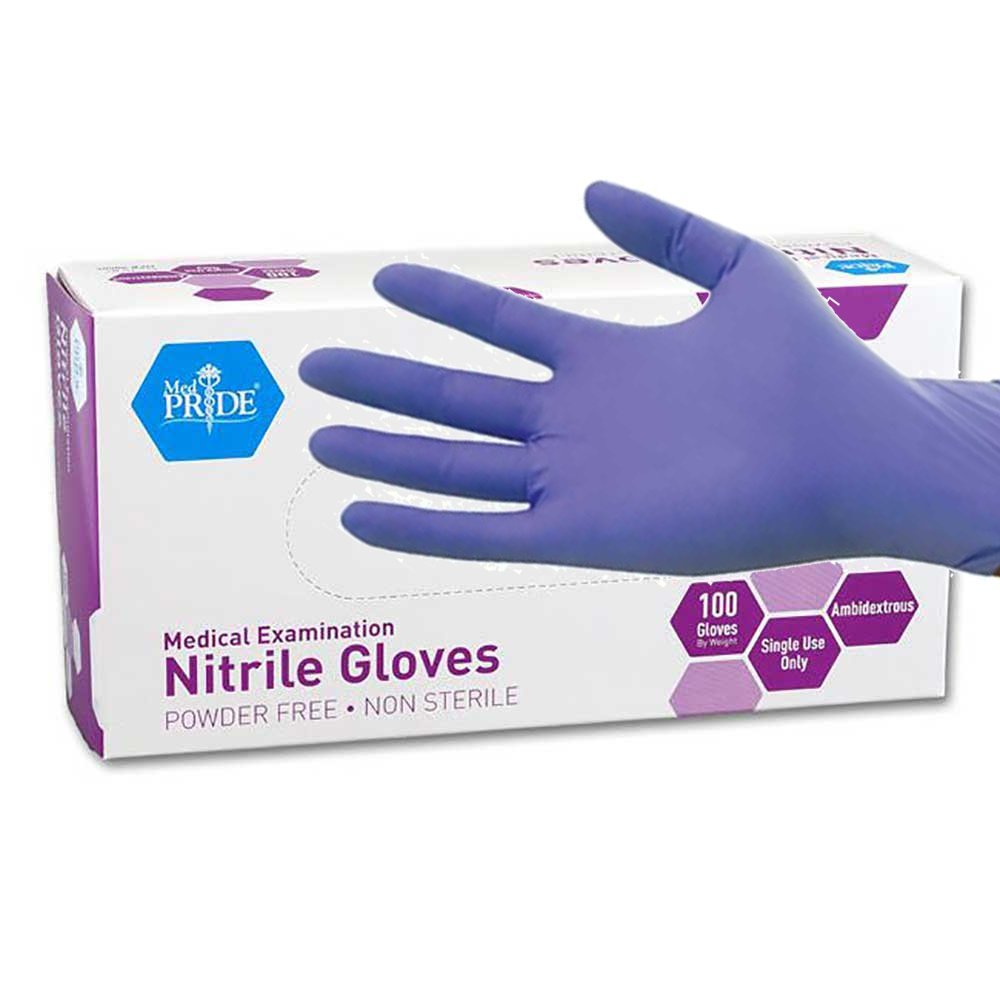
Nitrile Gloves
Pros
- Protects you and your patient from infections
- Easy to carry
Cons
- Need to be repackaged to remain sterile
Gloves protect both parties from exposure and can prevent infection.
Antiseptic Spray
While this isn’t a must-have, antiseptic spray is pretty dang handy. It can be used to sterilize wounds and prevent infections quickly. Some sprays, like Dermoplast, have pain relievers in them to help manage pain.
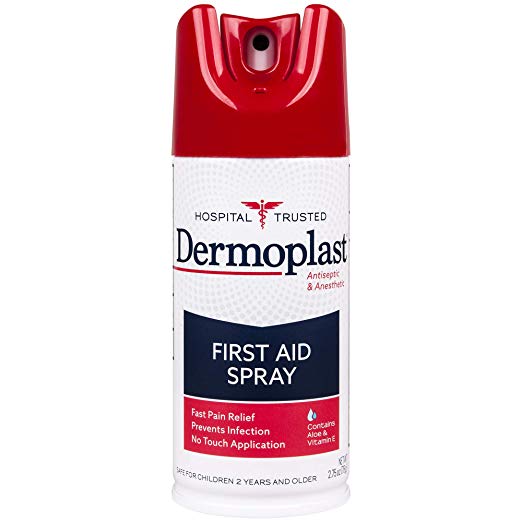
Dermoplast First Aid Spray
Pros
- Soothes and sterilizes
- Spray directly on wounds
Cons
- Large item for small IFAKs
If you’ve got space, keep it in mind. This is also a good addition to a larger kit you keep in your car.
Band-Aids and Boo Boo Fixes
Hey, sometimes it’s not about saving lives, just making them a little more comfortable. We hope this is the only part of your kit you’ll ever need to use, and we’re pretty sure you’ll be glad to have it when you do need it.
You don’t need much but there are a few things that’ll be worth including, such as:
- A few different sizes of adhesive bandages
- Sting-relief wipes or gel
- Pain relievers
- Antibiotic ointment
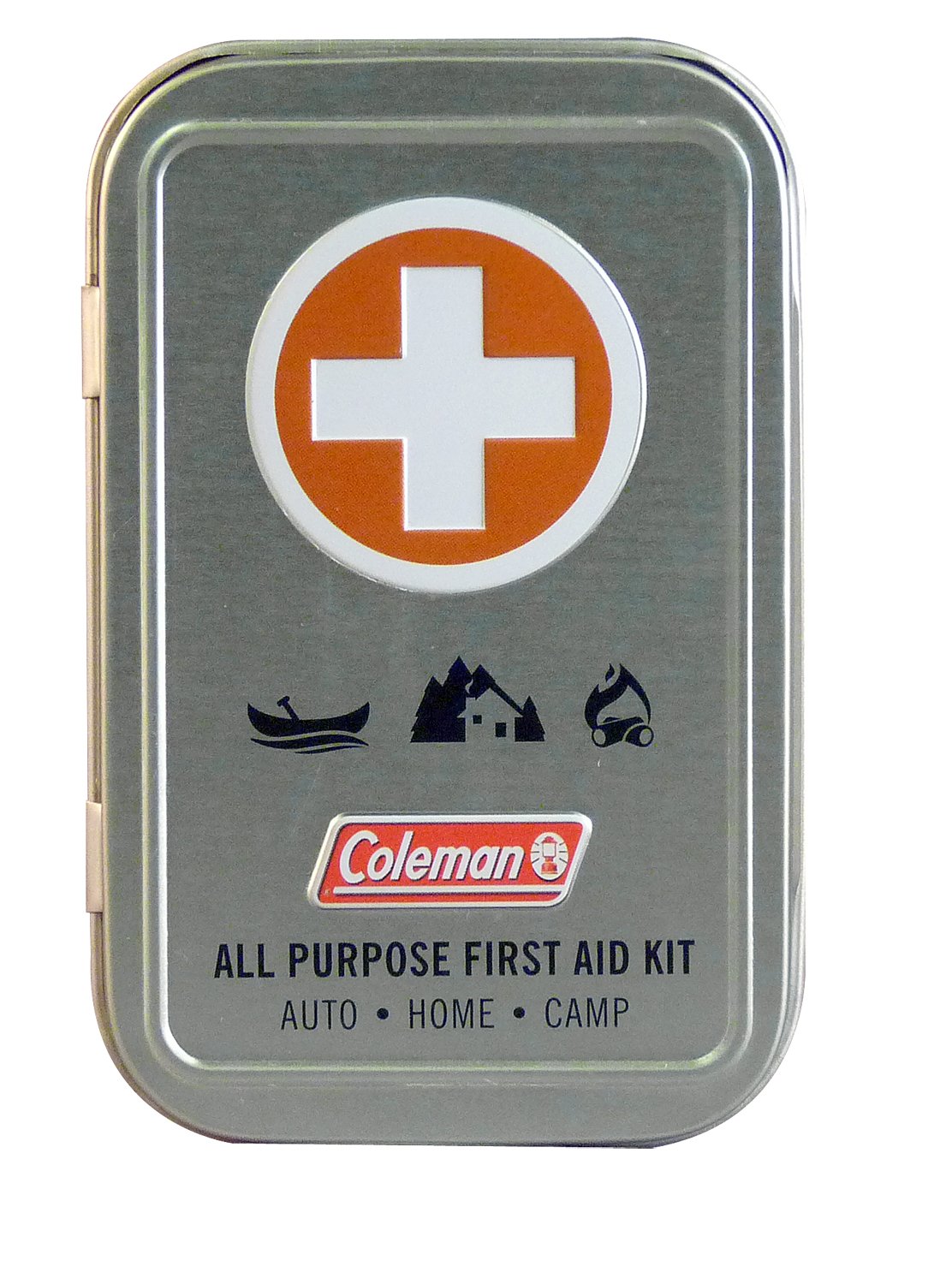
Coleman Mini First-Aid Kit
Pros
- 27 pieces of common first-aid supplies
- Handy tin box
Cons
- Not compressable
Other Tools
Now, none of these are technically required to get the job done, but boy, they sure can help. Keeping these in your IFAK, or just handy in general, can save time, make it easier to treat your patient, and make your life easier.
Flashlight or Headlamp
A penlight is a great addition to your IFAK, especially if you’re low on space, but a headlamp frees up your hands (and means you don’t have to hold your light in your mouth).
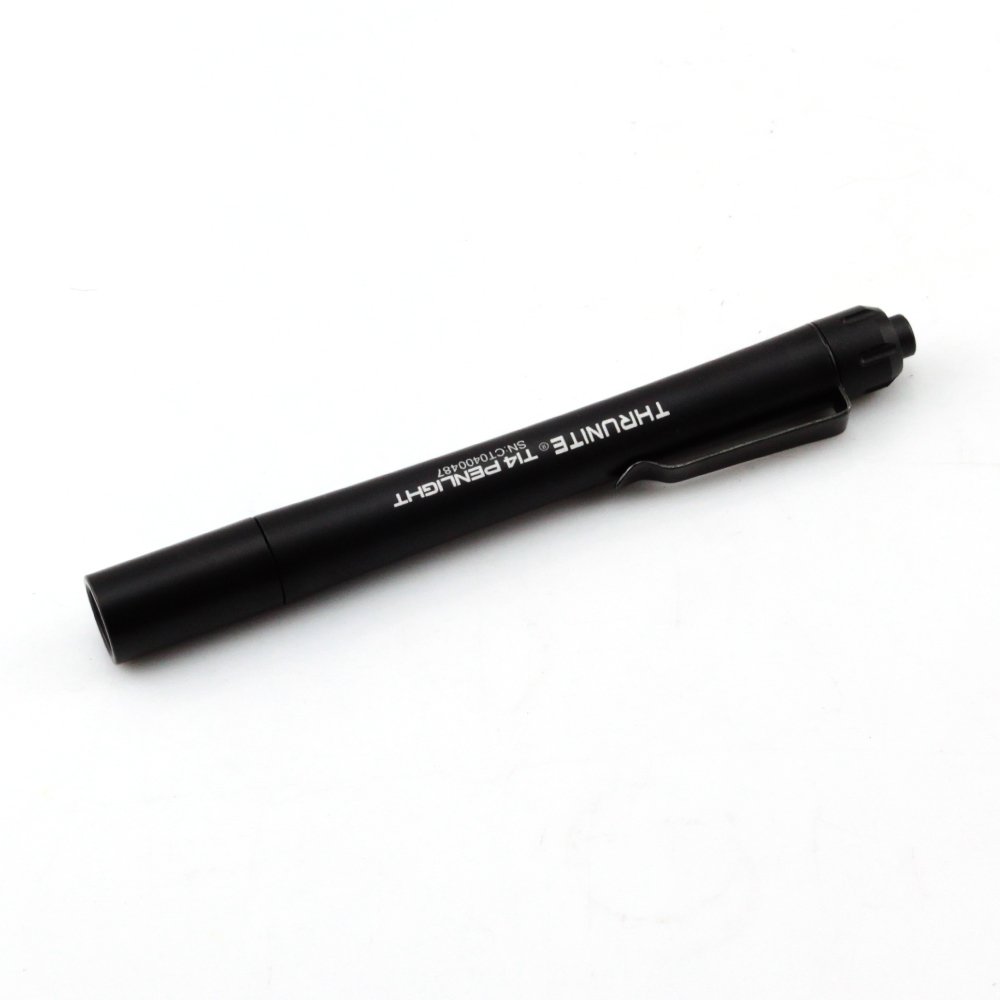
ThruNite Ti4
Pros
- Small size
- 252 lumens max output
- 3 brightness settings and strobe
Cons
- Might turn on in your bag
Check out our best EDC flashlights guide to find a great light for your kit!
Trauma Shears
Clothing in the way of treating a wound? Not anymore! Trauma shears make it easy to cut clothes, bandages, packaging, and more while providing treatment.
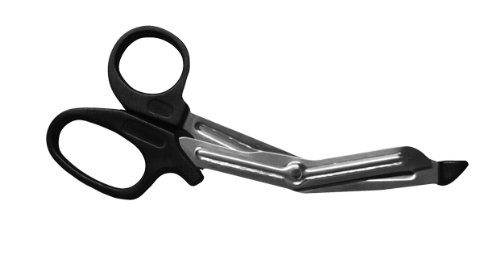
Trauma Shears
Pros
- Allows your to cute through clothing and bandages quickly
Cons
- Bulky for a small IFAK
These might be a little big for a small kit, but if you’ve got space, they’re so worth it.
Tweezers
Small but mighty — tweezers do a world of good when you need to remove splinters, debris, and other stuff from wounds. Keep a pair in a Ziploc bag to make sure they’re sterile.
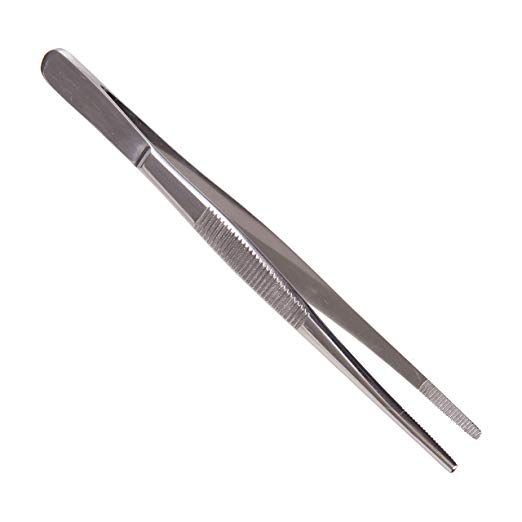
MABIS Stainless Steel Tweezers
Pros
- Takes things out of where they're not supposed to be
Cons
- Large size
Sharpie
A permanent marker comes in handy for writing down when a TQ was applied and vital information on your patient to make sure that it is passed along to higher medical care.
Get Training
All the gear in the world won’t help you without knowing when and how to use it. Look for first-aid courses near you. There is probably an organization, group, college, or other association that offers courses on first-aid, trauma treatment, CPR, and other life-saving skills.
For a free reference guide, check out the US Army Tactical Combat Casualty Care handbook. It won’t replace hands-on training, but it’s a good start and show you a lot of what you should know.
Best IFAK Pouches
Now that you know what goes in one and why, let’s chat about the pouch itself. If you’re building your own kit, you’ll need something to stash it all in, anyways.
Like anything else — you’ve got plenty of options, and the right one for you depends on what you like and want to put in it.
Here are a few pouches we think are pretty great.
1. Blackhawk STRIKE First Aid Pouch
The STRIKE pouch is an affordable, simple, but well-built IFAK pouch. It doesn’t have a lot of fancy features, but it’ll get the job done and keep your supplies in one place.
It’s got two internal dividers and plenty of elastic bands to hold all your supplies neatly for when you need them.
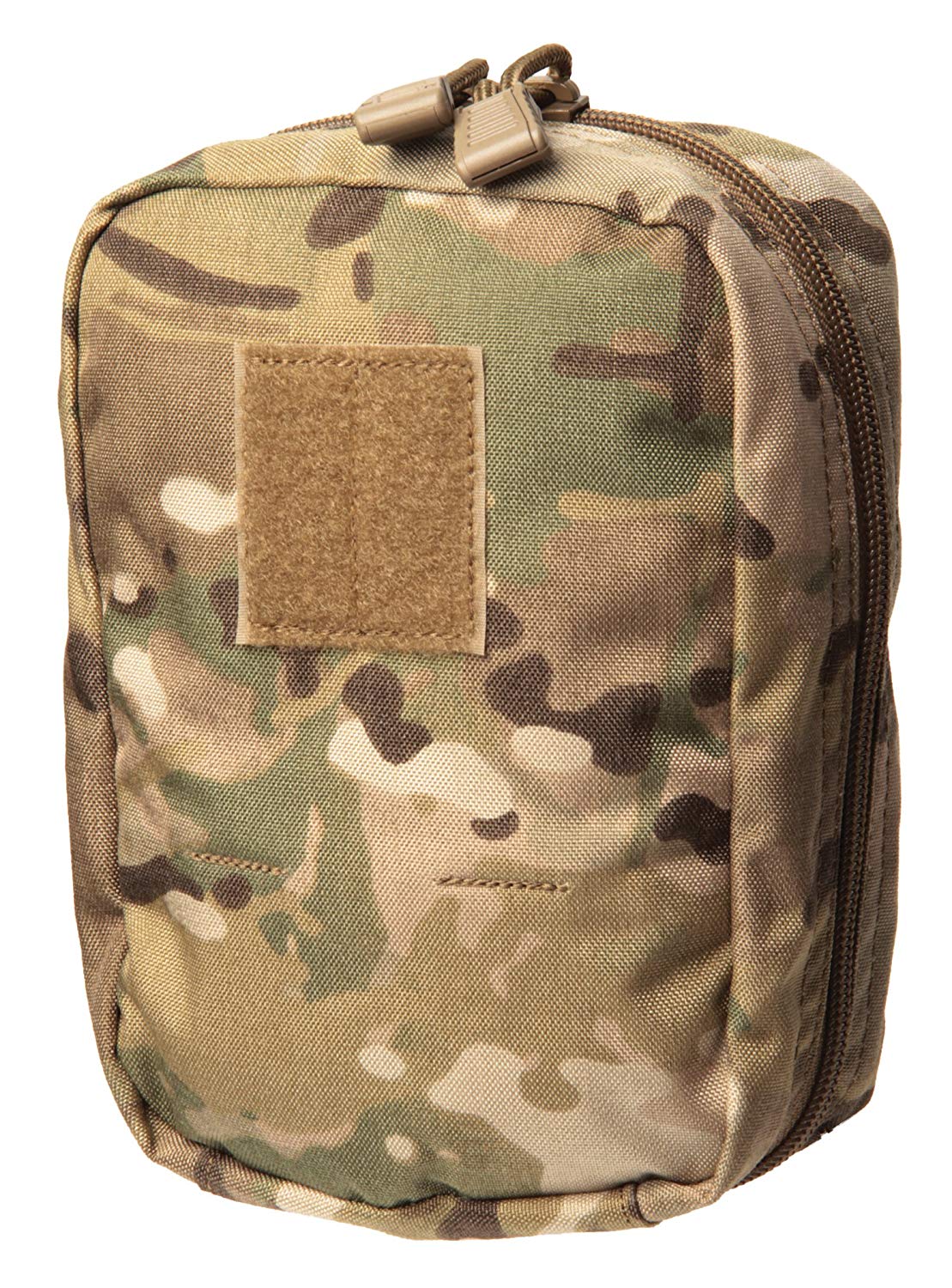
Blackhawk STRIKE First Aid Pouch
Pros
- Easy to carry and organize
- Straps to prevent uncontrolled opening
- 2 internal dividers
Cons
- Doesn't open flat
This pouch is hinged on the bottom, but two straps keep it from flopping open and dumping all your gear everywhere. This means it’s a little harder to access stuff, but if you don’t need it all laid out to see what you’ve got, it’s still pretty useful.
The STRIKE pouch is a good size for a well-stocked IFAK, so you won’t have to worry about making everything fit inside. It’s a pretty well-thought-out design, we think, and fantastic for those on a budget.
2. USMC IFAK Pouch
Tried and true, the USMC IFAK Pouch has been trusted by Marines for years. It may not have all the fancy features of other pouches, but it has plenty of space and was made to last.
We love this pouch for its durability — after all, it was made to endure deployments with infantry Marines. It features elasticized bands and loops on the interior to keep your gear organized nice and neat, as well as the ability to be laid completely open for easy access.
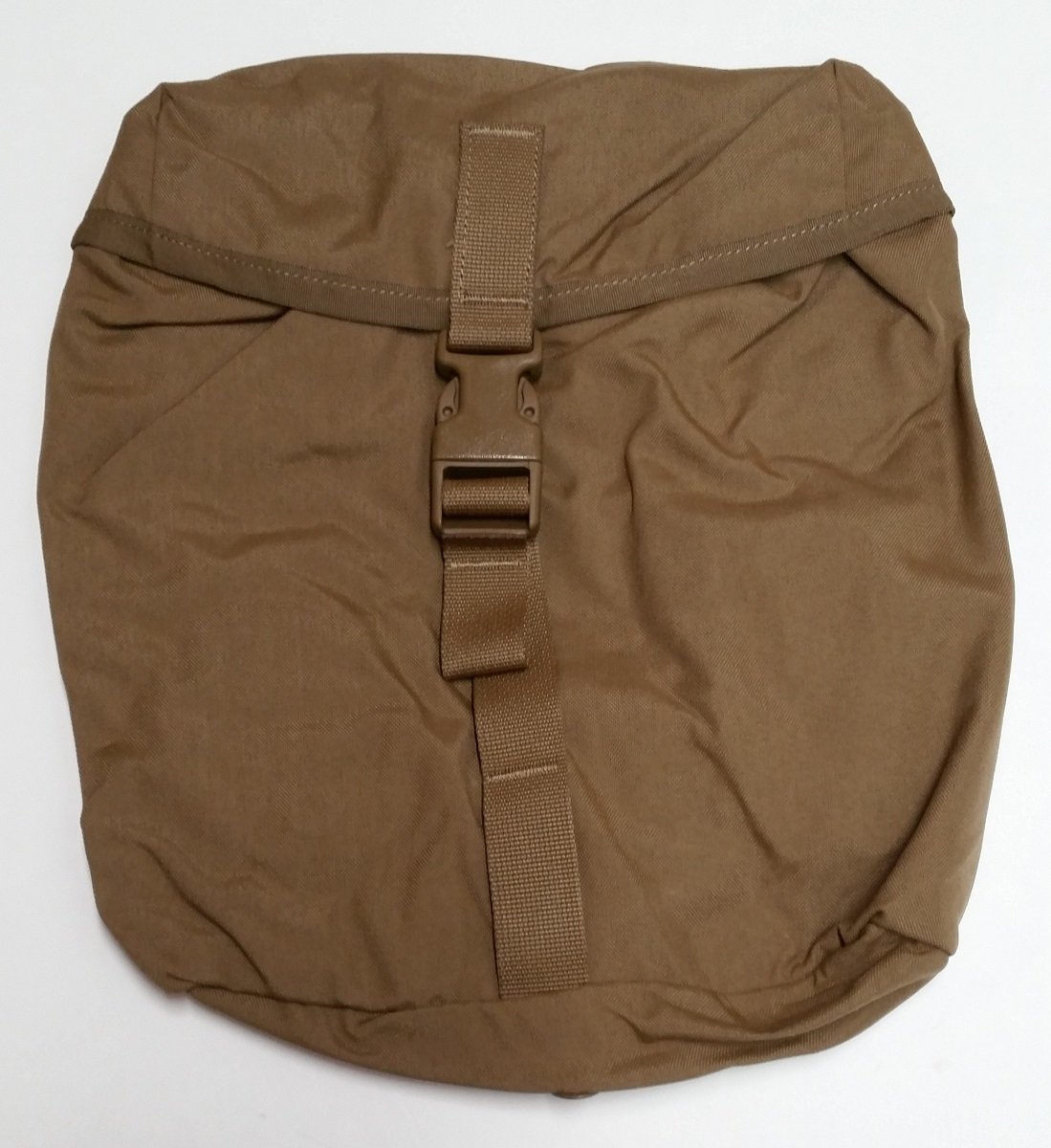
USMC IFAK Pouch
Pros
- Basic, no-frills pouch
- Elastic bands for organizing gear
- MOLLE compatible
Cons
- No fancy feature to assist you
There’s not too much to say about it, but how much more really needs to be said? For proven toughness and effectiveness, it’s hard to go wrong with the USMC pouch.
3. Blue Force Gear Trauma Kit NOW
A bit of a fancier option, the BFG Trauma Kit NOW is designed for rapid deployment and easy access. This pouch differs a bit from the last two since it is actually a pouch with a fully removable insert.
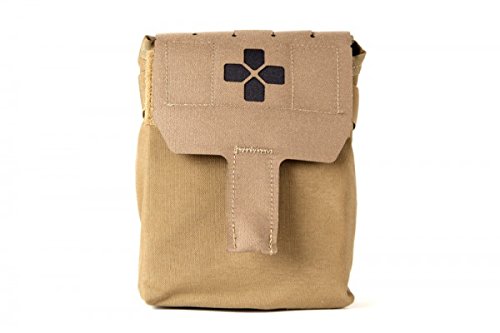
Blue Force Gear Trauma Kit NOW
Pros
- Removable organizational insert
- Compact yet spacious
- Durable design
Cons
- Expensive
The insert folds and has plenty of slots, elastic bands, and loops to keep even the most well-stocked IFAKs tidy. The insert can be pulled out from the pouch and laid out flat, which means you don’t need to keep fumbling with your gear for the next tool you need.
BFG even makes a tourniquet holder that attaches to the top of the pouch for easy and rapid access.
Best Complete IFAKs
If you’re looking to buy a ready-to-go kit, a complete IFAK is the way to go. You can add to it or modify it as your heart desires, but you’ll get everything you need in one handy package, too.
Pre-built IFAKs can be pretty dang handy, but don’t forget to check out what’s inside and make sure you know how to use it all. We also recommend adding another CAT, just ‘cause.
1. AMK Field Trauma Kit
First up, we have a great all-around kit.
It’s designed with the adventurous among us in mind, but it’ll still work for shooters. If you’re an avid hiker, backpacker, rock climber, or camper, it’s worth tossing the AMK Field Trauma Kit in your pack.
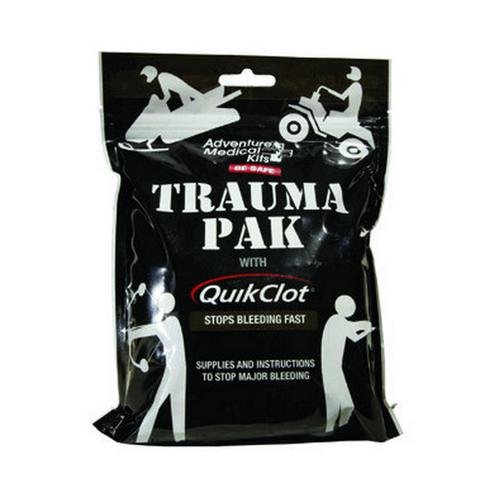
AMK Field Trauma Kit
Pros
- Handy pack for handling common traumatic injuries
- Instructional sheet explaining how to treat different wounds
- Sealed and ready for your next adventure
Cons
- Less gear than a personalized IFAK
The plastic pouch contains plenty of supplies to treat trauma out in the bush, including gloves, hemostatic agent gauze, a lot of bandages, antiseptic, and other supplies you’ll want around.
What we really loved is that this kit also came with the Comprehensive Guide to Wilderness & Travel Medicine — a complete and easy-to-follow guide to, well, wilderness and travel medicine. It’s perfect for making sure you or anyone rescuing you can look up what to do.
2. Blue Force Gear Micro Trauma Kit NOW
Our top pick for a low-profile, EDC IFAK is the Micro Trauma Kit NOW from BFG.
Functionally, the pouch is very similar to its bigger sibling that we talked about above, the Trauma Kit NOW. It’s got the same removable insert and features, just very small.
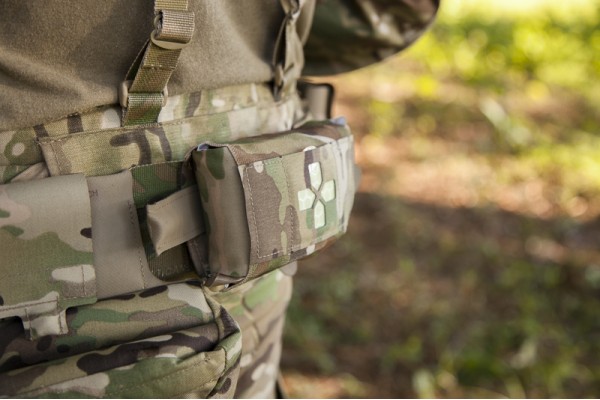
You can find the pouch on its own, but we like the stocked kits. There are two varieties: Basic and Advanced.
The Basic kit is smaller, but has less in it. The Advanced is better stocked, but a bit bulkier. If you can stand it, the Advanced kit will hold you in much better stead.
Even the Basic kit has a lot of gear in it, including hemostatic gauze, gloves, tourniquets, and more.
3. Gunfighter’s Trauma Kit
This kit really is more of a goody bag, since you’ll need to provide the pouch yourself, but it does have everything you need for a single-use IFAK, all vacuum-sealed in a plastic wrapper.
We like the Gunfighter’s Trauma Kit to toss in the car, where you might not need a pouch, or in a range bag. You also can open it up and transfer it to one of the pouches listed above.
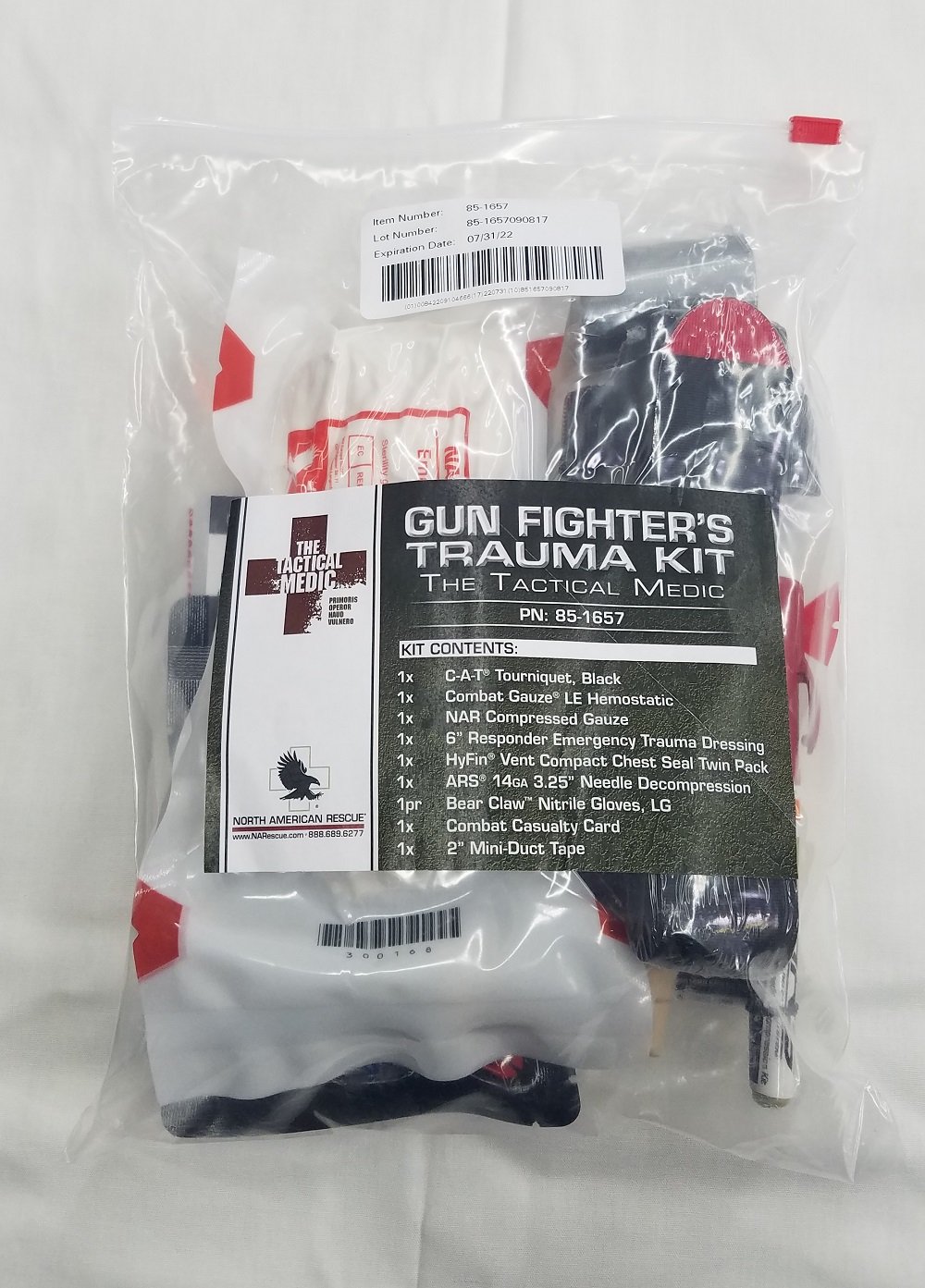
Gunfighter’s Trauma Kit
Pros
- Ready for serious traumatic injuries
- Sealed packet is great for tossing in a bag or car
- Contains a lot of tools to handle emergencies
Cons
- Packaged is designed for one-time use
It comes with a CAT tourniquet, compression bandage, a chest seal, Combat Gauze, a needle decompression tool, duct tape…y’know, all the basics you need.
4. North American Rescue Squad Medic’s Kit
Okay, so we know that this article is about individual first aid kits, but if you’re preparing to care for a group, may we recommend the North American Rescue Squad Medic’s Kit?
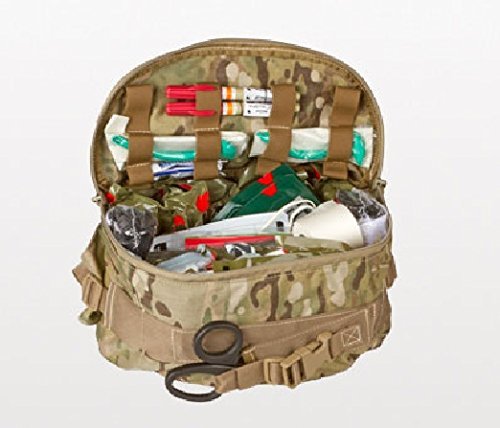
North American Rescue Squad Medic’s Kit
Pros
- Stocked for caring for a large group's medical needs
- Multiple attachment options for carrying
Cons
- Heavy
It’s massive, extraordinarily well-stocked with top-quality medical supplies, and comes from one of the best first-aid product companies. Bring this kit along if you’re in a group, expect to be away from civilization for a good while, or just want to be super-duper prepared.
This kit’s got everything you need.
Ready for Anything
Being prepared for anything starts with learning how to treat traumatic wounds and making sure that you and your IFAK are ready.
IFAKs may have been developed for battlezones, but they’re a great tool for any avid outdoorsman, shooters, and anyone who is looking to be well-prepared.
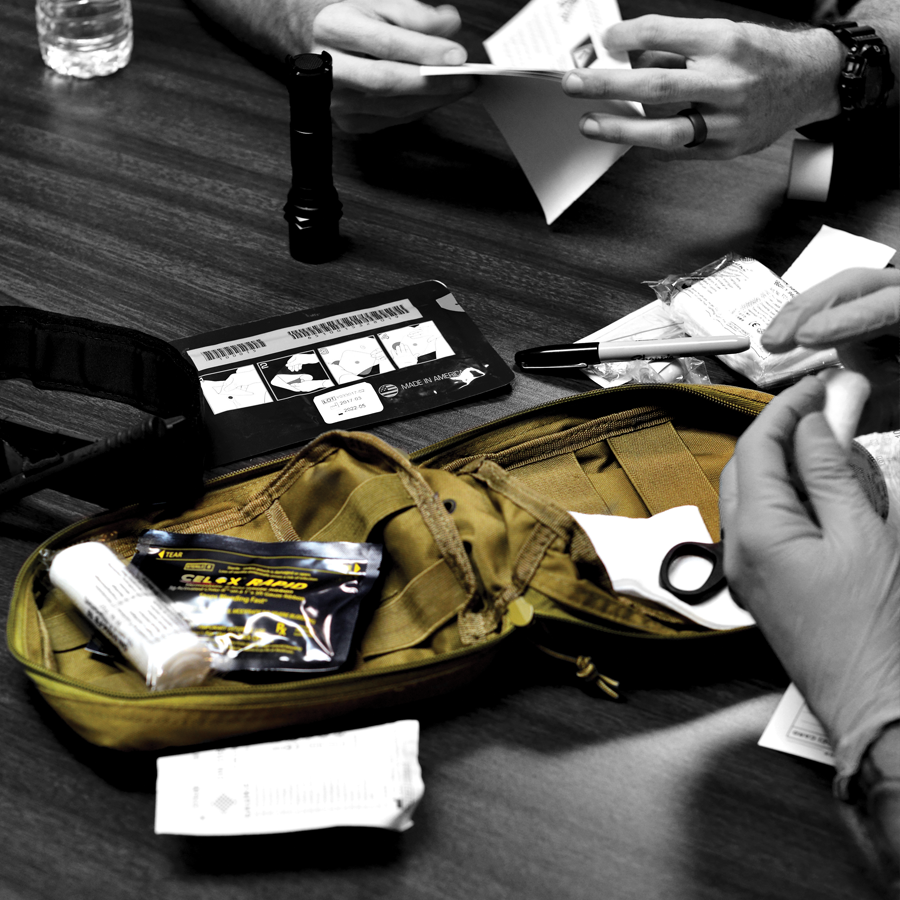
Putting together your own IFAK is an educational experience for sure, but pre-built IFAKs are also an affordable, easy way to make sure you have a kit in the car, your range bag, and even at home — anywhere you might need a life saving medical kit.
Whether you want to be more responsible for your own safety or are invested in helping others, get an IFAK. Learn how to use it. Keep it close at hand.
What about you? Do you carry an IFAK? What’s in yours? If you’re looking to up your EDC game, check out our list of best EDC knives.


